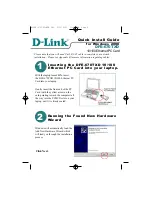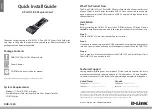
42
8271D–AVR–05/11
ATmega48A/PA/88A/PA/168A/PA/328/P
10.5
Power-down Mode
When the SM2...0 bits are written to 010, the SLEEP instruction makes the MCU enter Power-
down mode. In this mode, the external Oscillator is stopped, while the external interrupts, the 2-
wire Serial Interface address watch, and the Watchdog continue operating (if enabled). Only an
External Reset, a Watchdog System Reset, a Watchdog Interrupt, a Brown-out Reset, a 2-wire
Serial Interface address match, an external level interrupt on INT0 or INT1, or a pin change
interrupt can wake up the MCU. This sleep mode basically halts all generated clocks, allowing
operation of asynchronous modules only.
Note:
If a level triggered interrupt is used for wake-up from Power-down, the required level must be held
long enough for the MCU to complete the wake-up to trigger the level interrupt. If the level disap-
pears before the end of the Start-up Time, the MCU will still wake up, but no interrupt will be
generated.
”External Interrupts” on page 72
. The start-up time is defined by the SUT and CKSEL
Fuses as described in
”System Clock and Clock Options” on page 27
.
When waking up from Power-down mode, there is a delay from the wake-up condition occurs
until the wake-up becomes effective. This allows the clock to restart and become stable after
having been stopped. The wake-up period is defined by the same CKSEL Fuses that define the
Reset Time-out period, as described in
10.6
Power-save Mode
When the SM2...0 bits are written to 011, the SLEEP instruction makes the MCU enter Power-
save mode. This mode is identical to Power-down, with one exception:
If Timer/Counter2 is enabled, it will keep running during sleep. The device can wake up from
either Timer Overflow or Output Compare event from Timer/Counter2 if the corresponding
Timer/Counter2 interrupt enable bits are set in TIMSK2, and the Global Interrupt Enable bit in
SREG is set.
If Timer/Counter2 is not running, Power-down mode is recommended instead of Power-save
mode.
The Timer/Counter2 can be clocked both synchronously and asynchronously in Power-save
mode. If Timer/Counter2 is not using the asynchronous clock, the Timer/Counter Oscillator is
stopped during sleep. If Timer/Counter2 is not using the synchronous clock, the clock source is
stopped during sleep. Note that even if the synchronous clock is running in Power-save, this
clock is only available for Timer/Counter2.
10.7
Standby Mode
When the SM2...0 bits are 110 and an external crystal/resonator clock option is selected, the
SLEEP instruction makes the MCU enter Standby mode. This mode is identical to Power-down
with the exception that the Oscillator is kept running. From Standby mode, the device wakes up
in six clock cycles.
















































